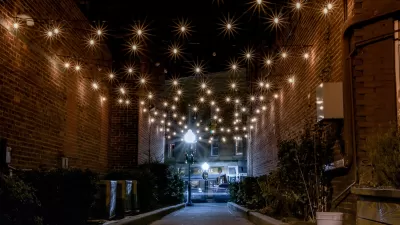According to the Pew Research Center, suburban dwellers are the most content with where they live, despite reports that also find that suburbs are not regarded the most ideal places to live.
"A deeper look at these data suggests the significant role that demography plays in shaping how residents view their communities. And it also highlights the very different lives that America's haves and have-nots are living, down to the stark differences in their perceptions of the quality of the neighborhoods they call home.
Affluent Americans tend to be big boosters of their communities, giving them top marks as places to live, work and raise families. This finding is not surprising: the affluent can afford to live in more desirable communities, and these communities, in turn, can afford to offer more and better services and amenities to their residents. But the degree to which money matters is notable. Fully half (51%) of all adults with family incomes of $100,000 a year or more give their community top ratings, compared with just a quarter of those earning less than $50,000. Similarly, college graduates are twice as likely as those with a high school degree or less education to express high levels of community satisfaction (46% vs. 23%).
Significantly, a larger share of college graduates as well as adults earning $100,000 a year or more live in the suburbs than in cities, small towns or rural areas -- little wonder, then, that community satisfaction is highest in suburban communities."
FULL STORY: Suburbs Not Most Popular, But Suburbanites Most Content

Maui's Vacation Rental Debate Turns Ugly
Verbal attacks, misinformation campaigns and fistfights plague a high-stakes debate to convert thousands of vacation rentals into long-term housing.

Planetizen Federal Action Tracker
A weekly monitor of how Trump’s orders and actions are impacting planners and planning in America.

In Urban Planning, AI Prompting Could be the New Design Thinking
Creativity has long been key to great urban design. What if we see AI as our new creative partner?

Portland Raises Parking Fees to Pay for Street Maintenance
The city is struggling to bridge a massive budget gap at the Bureau of Transportation, which largely depleted its reserves during the Civd-19 pandemic.

Spokane Mayor Introduces Housing Reforms Package
Mayor Lisa Brown’s proposals include deferring or waiving some development fees to encourage more affordable housing development.

Houston Mayor Kills Another Bike Lane
The mayor rejected a proposed bike lane in the Montrose district in keeping with his pledge to maintain car lanes.
Urban Design for Planners 1: Software Tools
This six-course series explores essential urban design concepts using open source software and equips planners with the tools they need to participate fully in the urban design process.
Planning for Universal Design
Learn the tools for implementing Universal Design in planning regulations.
Gallatin County Department of Planning & Community Development
Heyer Gruel & Associates PA
JM Goldson LLC
City of Camden Redevelopment Agency
City of Astoria
Transportation Research & Education Center (TREC) at Portland State University
Jefferson Parish Government
Camden Redevelopment Agency
City of Claremont





























